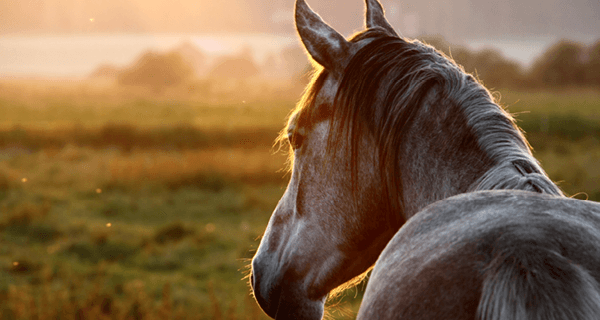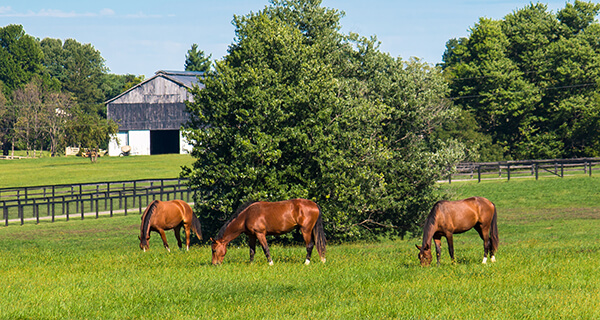Written by Jen Shah, Dean Dorton Tax Director and Equine Industry Lead
What drama we have in December! After Congress passed the Consolidated Appropriations Act, 2021 (Act) on December 21st, the President unexpectedly called for amendments. In the meantime, we are getting many questions about what is in this Act, so I’ve decided to issue our summary based on what’s currently in the Act passed by Congress. I will stress, however, that until the President signs this Act (or an amended version), the items covered below are not law. For now, let’s just call this a preview of what may be included if these items in the current bill make it into the final version.
Before I cover the economic relief provisions which may be most impactful to horse and farm owners, I wanted to note that this is a federal Act so the below discussion is focused at the federal level. States will separately decide whether or not to adopt all, some or none of this Act (again, if ultimately signed into law).
For industry participants, there are some favorable updates included within the Act. The three-year depreciation recovery period for yearlings, set to expire as of 12/31/20, is extended until 12/31/21. This Act also clarifies that farming net operating carrybacks are still eligible for the two-year carryback (versus the general five-year net operating loss carryback as authorized by the CARES Act). Additionally, those who previously waived the carryback period for farming net operating losses prior to the CARES Act being passed in March 2020 may revoke this prior waiver in order to file a net operating loss carryback claim.
As a reminder, the 100% bonus depreciation is still effective for 2020 through 2022 under current tax law. And, while thankfully not included retroactively with this Act, the pesky excess business loss limitation for individuals, trusts and estates (roughly $250K or $500K if married filing a joint return) returns in 2021 through 2025.
There are also other general non-equine specific provisions included within the Act. The employer tax credit for the paid sick and family leave has been extended through March 31, 2021 and the employee retention credit has been extended through July 1, 2021. Meals from restaurants are fully deductible in 2021 and 2022 (increased from 50% in prior years). For those individuals who do not itemize deductions, a $300 ($600 if married filing jointly) charitable deduction is available for cash donations made to qualifying public charities. The increased limitations for cash gifts made to public operating charities (but not donor-advised funds) for individuals (up to 100% of adjusted gross income) and corporations (up to 25% of taxable income) for 2020 are now extended into 2021.
There are several favorable updates to the Paycheck Protection Program (PPP) loans so let’s first cover updates to existing PPP loans and then move on to the new PPP loan program. First, the Act confirms the tax-free nature of the PPP loan proceeds that are forgiven (which quite frankly was the intent of the CARES Act but the IRS disagreed). So, if I used a $10K PPP loan to pay qualified payroll expenses and the PPP loan was fully forgiven, I am still able to deduct those $10K of payroll expenses on my tax return. This has been the topic of much debate since the IRS issued guidance and this Act confirms the tax-free nature of the forgiven PPP loan proceeds.
The amount of PPP loan authorized by the CARES Act was calculated based on average monthly payroll costs over typically a 12-month period times 2.5 (limited to $10M). Amounts spent on qualifying expenditures were eligible to be forgiven but at least 60% of these loan proceeds were required to be used for payroll costs. Qualifying expenditures previously included payroll costs, certain interest, rent and utilities. This Act clarifies that eligible payroll costs also include employer-provided group insurance such as dental, vision, disability and group life. It expands qualifying expenditures to also include costs such as software, human resources, accounting, and personal protective equipment purchased to comply with federal health and safety guidelines. In addition, a borrower may elect a covered period between 8 – 24 weeks after the PPP loan origination. While these provisions do not increase the amount of the PPP loan for which a business qualifies, they do increase the potential to maximize the PPP loan forgiveness.
For those who would not qualify for full forgiveness of the PPP loan proceeds under the CARES Act, you may be able to apply your PPP loan proceeds towards the expanded qualifying expenses included by this Act. You may do so as long as you have not yet received forgiveness. If your application is in process and you have additional expenses that would increase the PPP loan forgiveness amount, I would recommend contacting your banker as soon as possible.
This Act also expands eligibility to certain industry participants who were not previously eligible to apply for a PPP loan. 501(c)(6) organizations with 300 or fewer employees and minimal lobbying activities are generally now eligible for these PPP loans. Most significantly, however, sole proprietors (including those with a single-member LLC) who file a Schedule F and who do not have employees may apply for a PPP loan as long as they were in business as of February 15, 2020. Previously, in order to qualify, sole proprietors either had to have net self-employment income (often difficult to report a net taxable profit given current tax incentives) or employees. Under this Act, the 2019 gross revenues as reported on Schedule F may be used to calculate the PPP loan for which an owner is eligible even if they do not have employees.
This could potentially apply to industry participants such as trainers, bloodstock agents, consignors, jockeys, breeding businesses, pinhookers, and racing operations (if activities are reported on a Schedule F versus Schedule C) which may rely upon third party independent contractors versus employees. Note that the total 2019 Schedule F gross revenues when calculating the amount of PPP loan is limited to $100K. So, if a sole proprietor has Schedule F gross revenues of $100K or greater, the PPP loan is limited to $20,833. If you have previously applied for a PPP loan and are now eligible for a greater amount due to the above change, this Act allows you to request an additional amount of PPP loan proceeds based on this new calculation.
There is also a simplified application and forgiveness process for PPP loans of less than $150K if the business submits certain information to the bank which should expedite this process.
In addition to the enhancements to the existing PPP loan program, this Act creates a second loan, called a “PPP second draw” loan of up to $2M for smaller businesses that were in operation as of February 15, 2020 with decreased revenues. The loan amount for horse and farm owners (other industries qualify for a higher multiple) is still based on 2.5 times the average monthly payroll for one year prior to the loan or the 2019 calendar year. This second draw loan is also eligible for tax-free forgiveness if the proceeds are spent on the expanded definition of qualified expenses as noted above but at least 60% still needs to be spent on payroll costs.
In order to qualify for this “PPP second draw” loan, businesses must have 300 employees or less, have used (or will use) all of their first PPP loan and demonstrate at least a 25% reduction in gross receipts in the first, second, or third quarter of 2020 versus the same 2019 quarter. Different timelines apply to businesses that were not in operation during all of 2019 and applications submitted after January 1, 2021 are eligible to use the gross receipts from fourth quarter 2020. Eligible entities include businesses with employees and self-employed individuals. Given reduced or cancelled racing and sales, industry participants who used the first round of PPP loan proceeds may qualify for this second draw loan if the 25% reduction of gross receipts test is met.
There is not a specific deadline to apply for these enhanced PPP loan programs but based on the prior PPP loan program, it would be wise to apply as soon as possible. The Act requires that regulations be issued within 10 days of enactment so we should have more information once this guidance is issued. In the meantime, I would recommend gathering the information needed to calculate the potential PPP loan and communicating with your bank on how best to proceed.
Again, please consider the above a preview of what may be included in the final law. Stay tuned as we will communicate substantial updates (if applicable) to the above and continue to monitor legislative developments on these economic relief provisions which may impact horse and farm owners.
In the meantime, I wish everyone a happy and healthy holiday season. Cheers, Jen
Jen Shah, CPA
Tax Director
jshah@deandorton.com • 859.425.7651







